HEALTH
Getting enough protein as a vegan – a challenge or a matter of course?

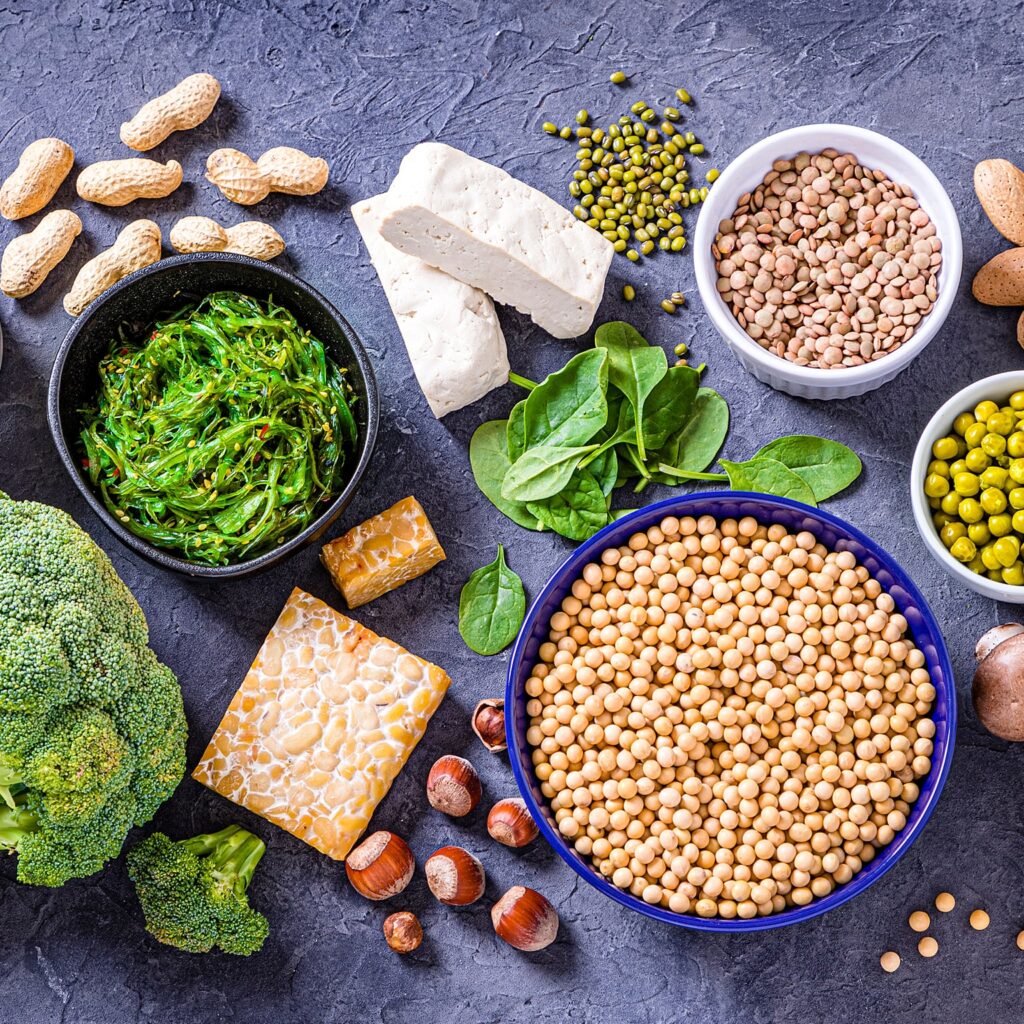
How plant-based food can make up for a lack of animal-derived proteins
Anyone wanting to eat consciously and well needs to make sure that their diet is balanced. This applies to flexitarians just as it does to vegetarians, as well as to people following a vegan lifestyle. When it comes to purely plant-based diets, there is a widespread prejudice that such diets do not provide enough protein. The fact is, however, that if you have a balanced vegan diet and consume enough calories, you will get enough of all the important amino acids.
The main sources of plant-based protein are pulses (soy, chickpeas (garbanzo beans), lentils, tempeh etc.) and whole grains. Additional sources are nuts and seeds, as well as pseudo-grains such as quinoa, millet and amaranth grain.
Some amino acid sources which are still relative newcomers to the world of protein sources include insects, seaweed and mushrooms. As the topic of insects as a food source has been making waves recently, we would like to take this opportunity to assure you, the customer, that insects are not vegan and that for this reason alone, you will not find them as part of the range on offer here at velivery.
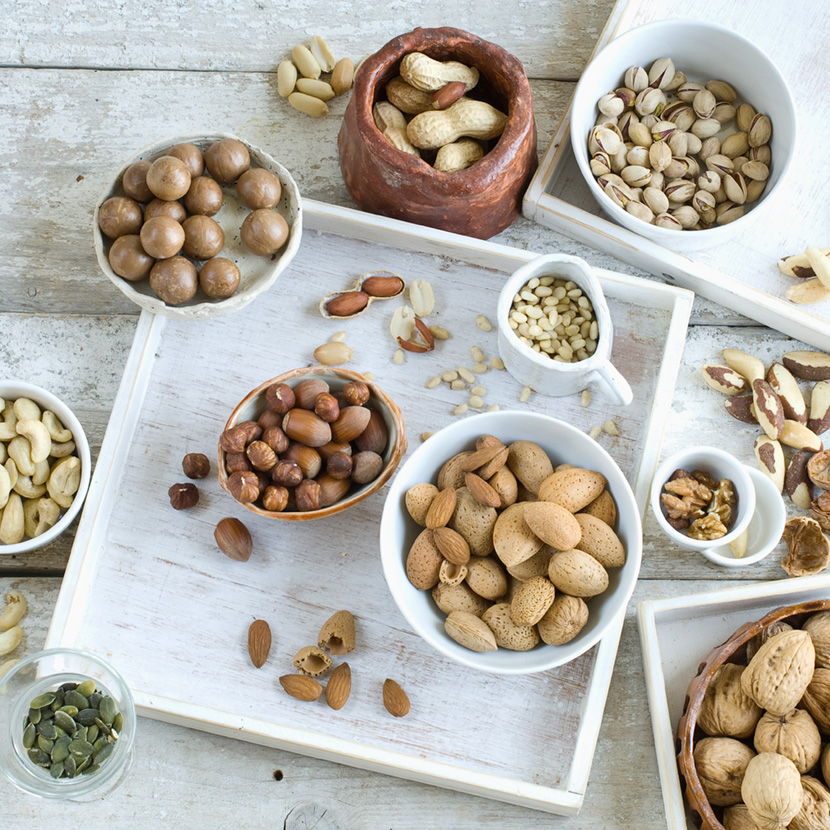
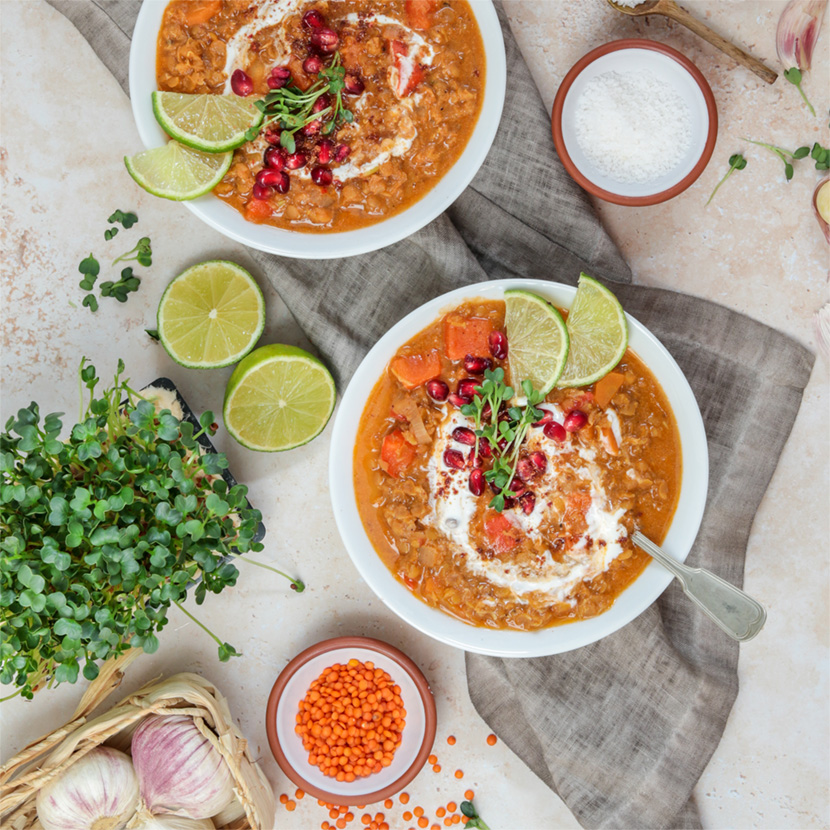

The key role played by proteins
Amino acids from food are vital for the body so that it can maintain and synthesize endogenous proteins, as well as for all processes which are influenced or controlled by them, such as growth, development, enzyme formation etc. “Traditionally”, humans get these amino acids from animal proteins in meat, fish, or dairy products. Nowadays, we know more about how easy it is to replace these with plant-based proteins, and how nutritious they are. The biological value of plant-based proteins can be improved by means of preparation (such as boiling, steaming) or by combining different plant-based protein sources. To be sure that you aren’t deficient in protein, it’s also recommended that for a purely vegan diet, you consume 10% more protein than an omnivore would (0.8g per kg of body weight per day, plus 10%).
The quality of protein you’re eating
In order to get the right amount of protein, the quality of the protein you eat is crucial. The degree of quality is generally determined by the biological value of the protein. This value tells us how many essential amino acids the food provides. In this context, essential means that the body cannot produce them by itself, which is why we need to get them from food. The gold standard for a biological value of 100% is (arbitrarily) a hen’s egg. All other protein sources are then measured in comparison to the egg. It is possible, however, for a food to have a value of more than 100, meaning that the hen’s egg can be “outdone”, so to speak.
Compared with plant-based protein sources, animal-based protein sources naturally contain a high proportion of essential amino acids. This means that from the outset, they have, per se, a higher biological value, but this does not automatically mean that they are more valuable to our bodies.
In general, it can be said that by mixing different protein sources, it is usually possible to achieve a particularly good nutritional goal and a high biological value, as the different amino acid patterns complement each other.
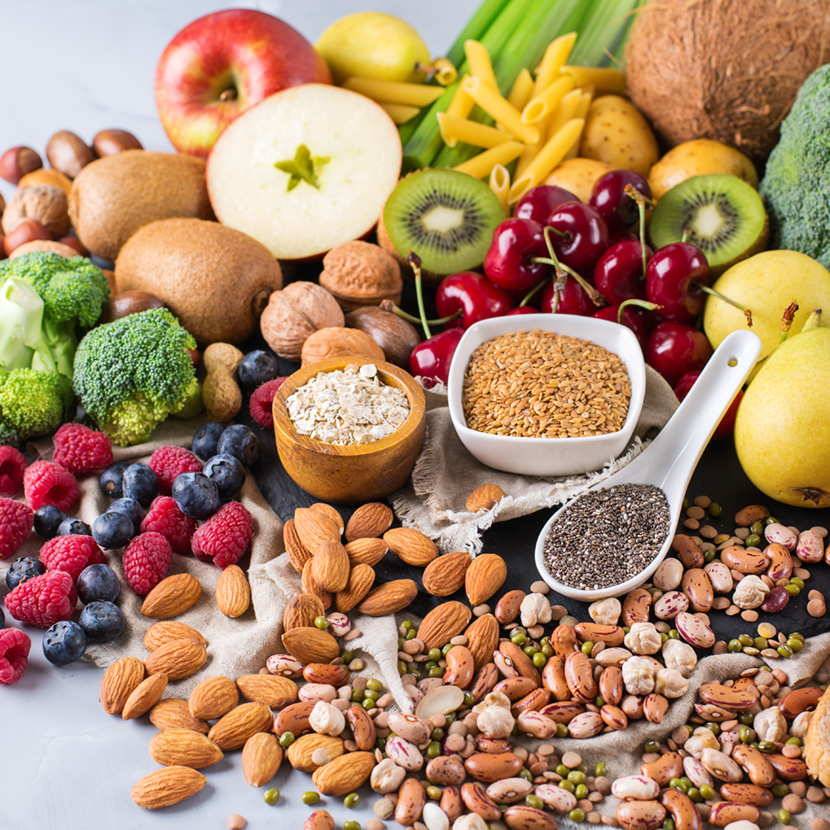
Creating a complete amino acid profile from plant-based sources alone
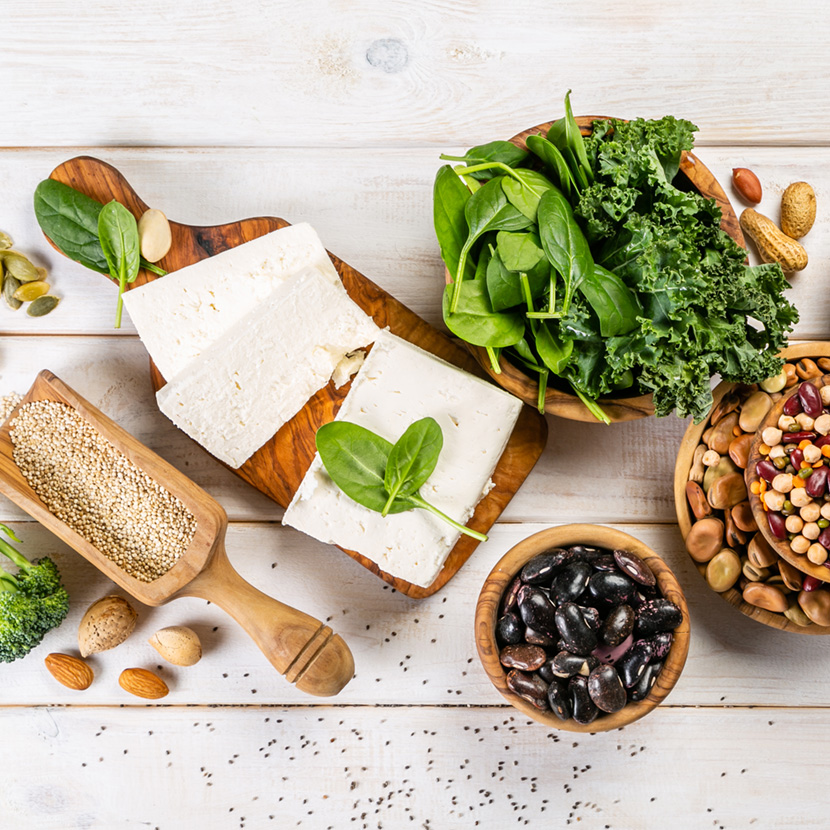
One of the prejudices that needs to be dispensed with is the idea that plant-based protein sources can’t provide all 20 essential amino acids. This is simply not true. While their essential amino acid content may be limited, they can provide all 20 of the amino acids needed by humans – without exception. It’s just important that, in order to get enough protein, you eat enough of your protein sources and as much variety as possible.
It’s also important for our bodies that the proteins we eat provide not only the amino acids we need, but also that they are as easy to digest as possible. This is expressed by way of the Digestible Indispensable Amino Acid Score (DIAAS), which can be a value of more than a hundred, or of significantly less. It all depends on how digestible the protein in question is.
Plant-based proteins generally tend to have a good score, because most of them are considered highly digestible. Other advantages are that they efficiently provide high levels of healthy, unsaturated fatty acids, and that at the same time, they are low in cholesterol, uric acid (purine) and fat. People who suffer from rheumatism or gout need to keep a particularly close eye on how much purine their food contains.
So, what good vegan protein sources are there?
A great classic: Pulses
Not only are beans, peas and lentils absolutely jam-packed full of fiber, carbohydrates and nutrients – they also bring plenty of protein to the table. The only drawback is that they don’t contain much methionine. By combining them with grains, however, this amino acid pattern can be perfectly complemented, creating an ideal plant-based amino acid source which is also low in saturated fatty acids and contains no cholesterol. Alongside classic combinations such as vegan curry, milk alternatives made from peas are not just a hit in terms of flavor – they’ll also ensure you get enough nutrients and protein. Triple Win!
Some protein stats:
- Peas: 23 grams of protein per 100 grams
- Red lentils: 25 grams of protein per 100 grams
- Chickpeas (garbanzo beans): 20 grams of protein per 100 grams
- Beans: 22 grams of protein per 100 grams
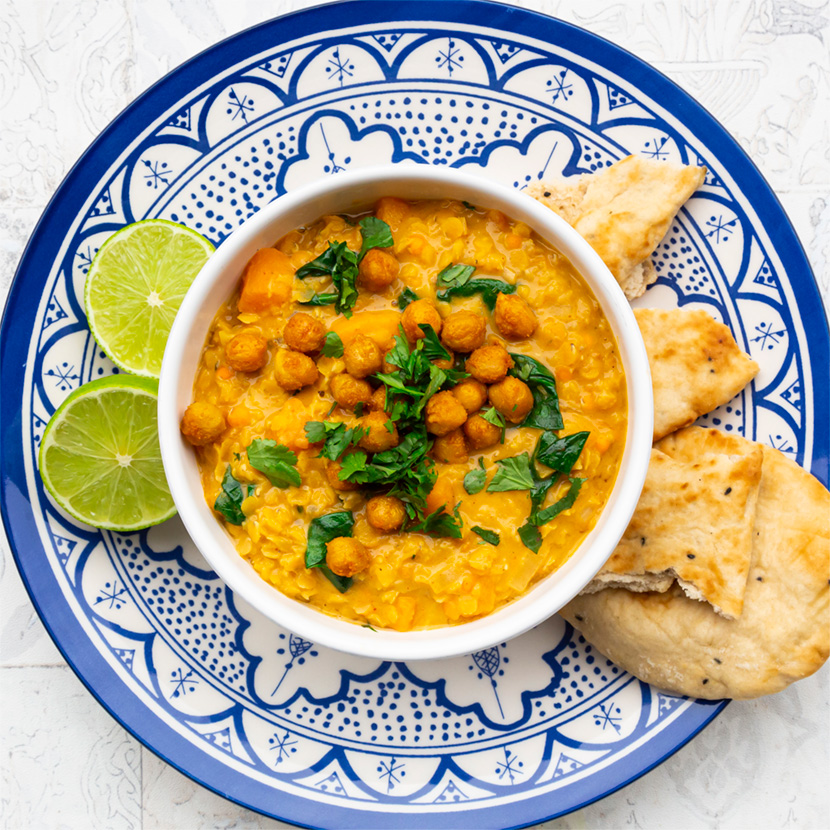
Hearty alternatives: meat substitute products
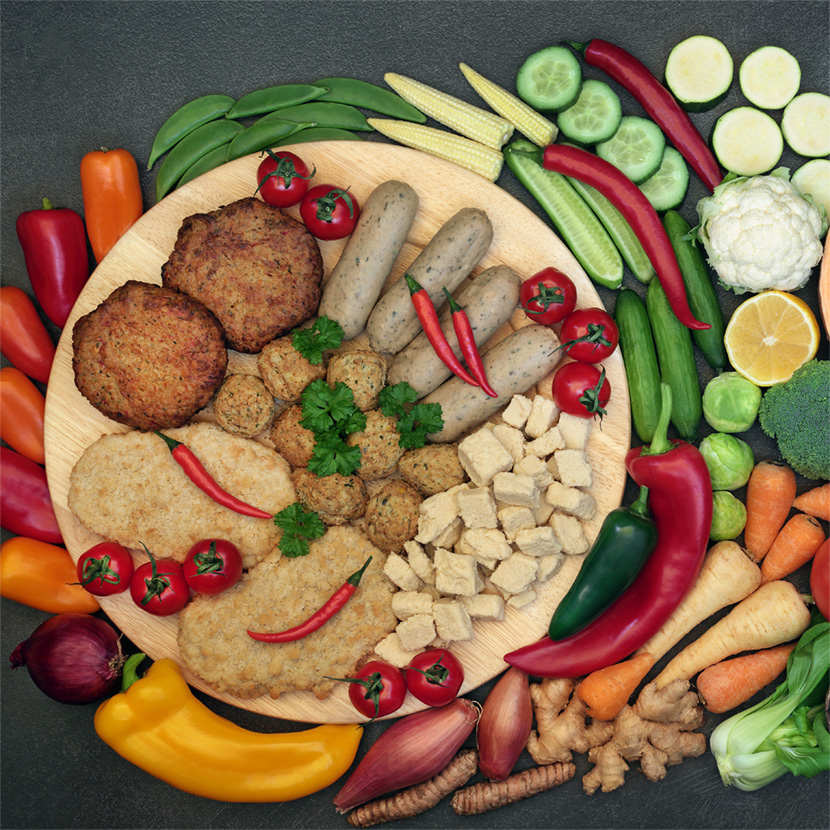
Vegan sausages, plant-based alternatives for the barbecue, or plant-based burgers often contain tofu, tempeh or seitan. To make the taste and consistency of these products closer and closer to the foods they imitate, research is still going on into meat replacement products and new products are being created which not only taste remarkably “realistic”, but also have advantages in terms of health.
Soy, which is the basis of products including tofu and tempeh (fermented soy beans), contains protein which is very similar to animal protein, and soy is therefore considered an ideal plant-based protein source. It provides all the essential amino acids, which means soy protein has a high biological value.
As soon as you ferment soy, to make it into products such as tempeh, this high-quality protein source also becomes great for gut health. The fermentation means that the raw ingredient is processed in such a way that the human body can digest it particularly well. This improves the nutrient profile of this protein-containing nutrient booster, which contains calcium, iron and phosphorus alongside many other micro-nutrients and fiber.
Another great source of protein is seitan, which is considered to be one of the richest plant-based protein sources. It consists, however, almost solely of gluten, which means it’s unfortunately not an option for coeliacs or people who are allergic to gluten. On the other hand, depending on how it is prepared, seitan’s flavor and consistency can be very similar to chicken, which makes it a very popular ingredient in vegan cuisine.
Protein stats:
- Seitan: approx. 30 grams of protein per 100 grams
- Tempeh: 20 grams of protein per 100 grams
- Tofu: 10 grams of protein per 100 grams
A protein boost for when you’re on the go: protein shakes and bars
It’s always good to have a protein kick on hand during the day. Vegans tend to go for nuts and seeds, which are not only delicious – they also contain plenty of energy, fat and protein.
In addition to being a source of minerals and valuable fats, these little nutrient powerhouses are full of high-quality proteins. And if you prefer to drink your protein rather than crunching on it, you should go for a tasty vegan protein shake. These shakes use various vegan protein sources and are available in many different flavors such as vanilla, chocolate and banana, giving you an easy way of topping up your protein levels very efficiently and without really trying!
Protein stats:
- Hemp seeds: 30 grams of protein per 100 grams
- Peanuts: 25 grams of protein per 100 grams
- Almonds: 20 grams of protein per 100 grams
- Chia seeds: 22 grams of protein per 100 grams
- Cashews: 18 grams of protein per 100 grams
- Brazil nuts: 15 grams of protein per 100 grams
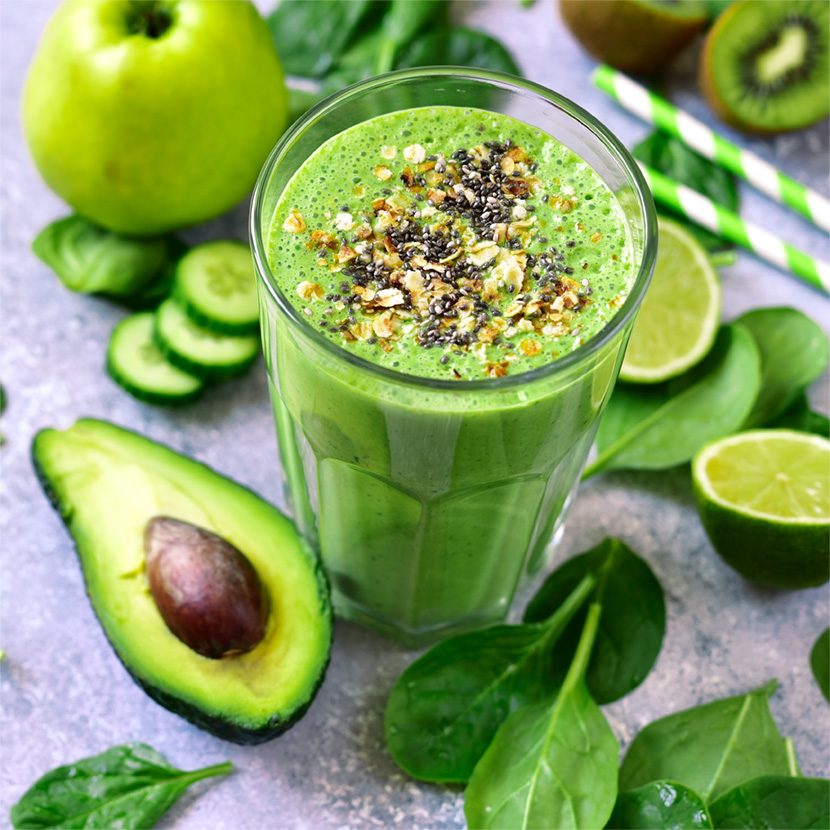
Fact check
In an attempt to categorize plant-based protein sources even better, the new research strand of the Faculty of Life Sciences of the University of Bayreuth in Germany is on the trail of interdisciplinary science. The study compares the protein provided by conventional and alternative protein-containing foods – on all of the necessary levels: from chemical analysis and biochemical aspects to consumer questions, as well as commodity flows and aspects of the circular economy, nearly all branches of science and practice are involved in the research. It is hoped that the study will give a holistic picture of the possibilities offered by plant-based protein sources.

List of references used:
Was sind Proteine und welche Funktionen erfüllen sie im Körper? | Eufic
Wie viel Protein brauchen wir? (dge.de)
Animal and plant protein intake and all-cause and cause-specific mortality: results from two prospective US cohort studies – PMC (nih.gov)
Infografik: Rund 8 Millionen Deutsche essen kein Fleisch | Statista
https://pubmed.ncbi.nlm.nih.gov/24667136/














